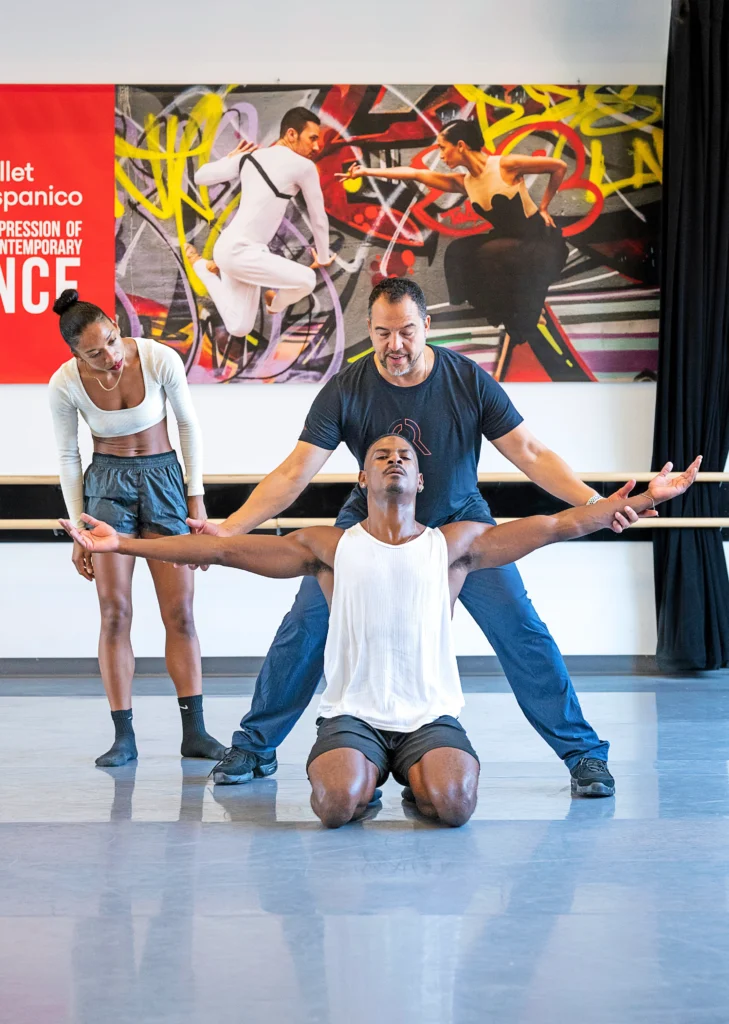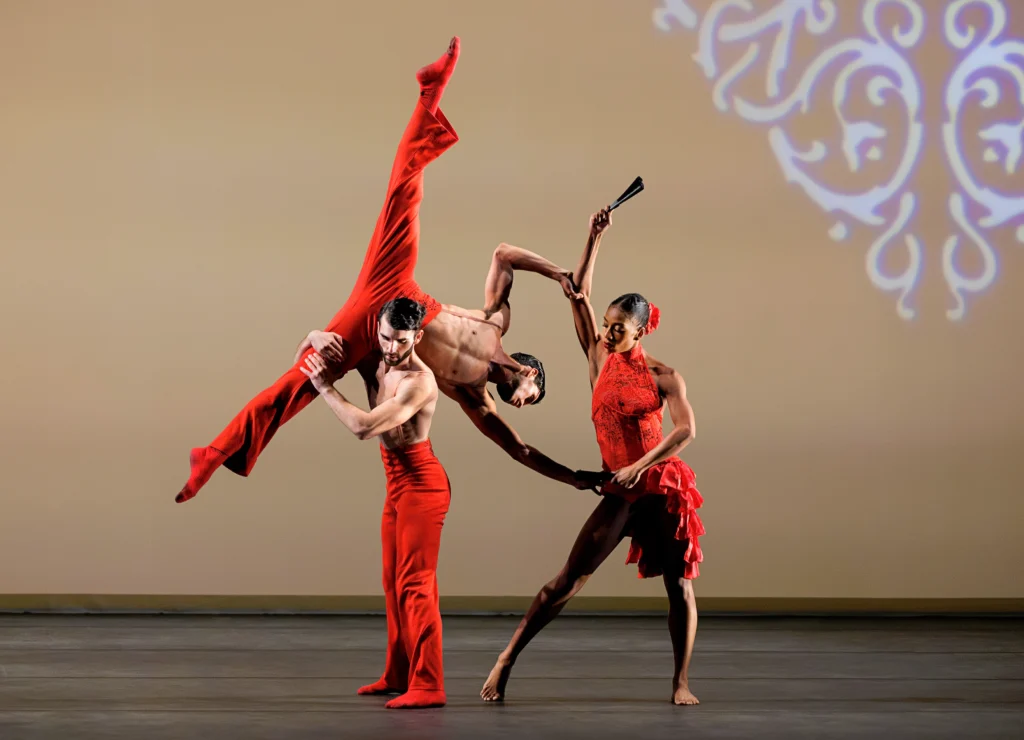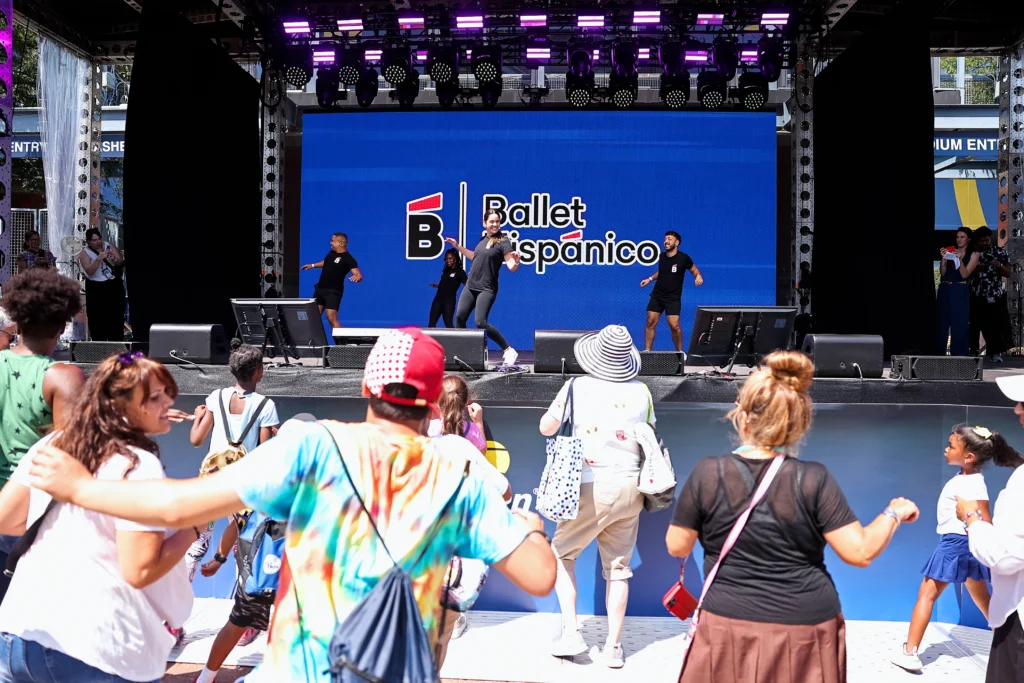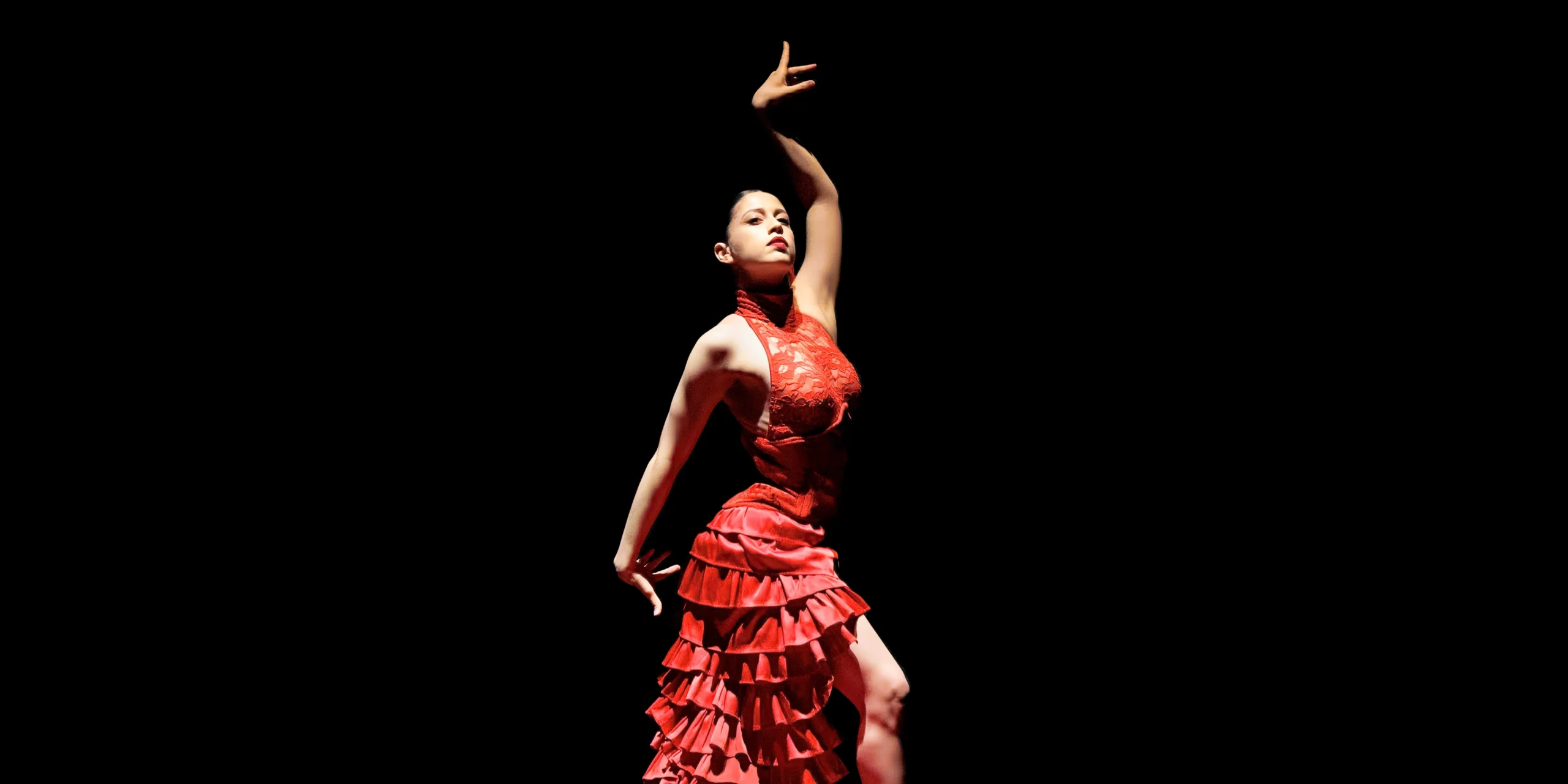At Ballet Hispánico, Dancers Are Considered Artists and Cultural Ambassadors
Dance may be a wordless art form, but Ballet Hispánico makes itself heard—with a unique artistic voice and an ever-expanding concept of Latinx/Latine culture. “We are a contemporary ballet company, and we celebrate the intersectionality of this culture,” says Eduardo Vilaro, BH’s artistic director and CEO, and a former company dancer. “I hear the question a lot: ‘I’m worried that I don’t look like a Latino.’ But I invite all dancers to come into our culture fully.”
BH artists hail from all walks of life and all over the map—from Brazil, Italy, and Mexico to Louisiana, Florida, and New York. What they have in common is strong ballet technique and a thirst for performing varied rep that spans full-length narrative works (Gustavo Ramírez Sansano’s CARMEN.maquía, Annabelle Lopez Ochoa’s Doña Peron), neoclassical ballets like William Forsythe’s New Sleep (Duet), and theatrical pieces such as Pedro Ruiz’s Cuban-inflected Club Havana.

Strong ballet, contemporary, and partnering technique are the foundation of everything BH does. “All of us have trained in ballet most of our lives, and we start every day with a ballet class,” says Omar Rivéra, a sixth-year dancer in the unranked company. “But you’re never just riding the wave—you’re diving into new movement, new vocabulary, different partnering.” Previous training in forms like flamenco, rumba, and cha-cha is not required; what’s essential, says third-year dancer Amanda del Valle, is “eagerness to learn and grow, to be diverse.”
Del Valle gets equal satisfaction from participating in BH’s educational and outreach endeavors, a wide-ranging catalog of programs such as Performances for Young People in schools, Hispanic Heritage Month, and Diálogos talks (on issues like “Reimagining Heteronormativity in Dance”) that boost inclusion and inspire creative aspirations in youth and, especially, people of color. “I grew up as a Girl Scout, so I enjoy doing community-service activities with kids and elders,” she says. “They get to ask us questions, and we get to share with them what the life of a professional dancer is like.”
BH’s New York City headquarters also houses its own academy, with classes from ages 2 to adult. The school’s La Academia and Pa’lante pre-professional programs can serve as a gateway into the main company; this year, two Pa’lante Scholars were hired as apprentices.
Community engagement has been a pillar of BH since it was founded in 1970 by Tina Ramirez. The company’s impact is such that in 2005 Ramirez was awarded the National Medal of Arts, while in 2020 BH was named one of America’s Cultural Treasures. A BH dancer is considered an ambassador as well as an artist, and Vilaro provides training in teaching and leadership. “We give them our core values—the whole dancer, the whole student, the whole audience member,” Vilaro says. “We give them the methodology, and within that let them be free.”
As an AGMA company, BH adheres to a 40-hour workweek—but beyond a month of rehearsal and creation process every August, and a New York City Center residency each spring, little is predictable. As of September, “it’s gangbusters, ‘Go on tour and perform as much as you can’ ” for the rest of the season, Vilaro says. Tours, performances, and events can pop up anytime, and “if it works with the schedule and gives the dancers an extra week of work, then I’m all for it.” BH artists thrive on adventure, teamwork, and “a lot of self-care,” del Valle says with a laugh.

It’s a demanding job that pays rich dividends. “Being a dancer at Ballet Hispánico is more than just being a performing artist, it’s a cultural experience,” Rivéra says. “Where we travel to, the communities we serve, the people that you’re with every day—you’re constantly enriching yourself as an artist and a person.”
Ballet Hispánico at a Glance
Number of dancers: 13 in main company, plus 2 apprentices
Length of contract: 26 weeks guaranteed; can expand to up to 40 weeks with additional touring
Compensation: Minimum $947.50 per week for 26 weeks, plus health care and salary for any extra weeks
AGMA signatory: Yes
Performances per season: Varies, but expect a lot of opportunities nearly year-round, sometimes on short notice.
Website: ballethispanico.org

Audition Advice
The company holds open auditions in spring in New York City, and by invitation when specific needs arise. Pointe shoes are required for female-presenting dancers. After a self-warm-up, dancers learn company rep, starting with technical ballet-based choreography, then a contemporary round, and finally, after cuts, partnering. “I’ll ask company artists to dance with the auditioners—how do they fit in? How comfortable do they feel moving with the company?” Vilaro says. “They give me their thoughts.”
Teamwork is everything at BH, and the partnering section, for example, “tells us how willing you are to work with others, how you pick up and apply information, and how you problem-solve,” says Rivéra. They’re looking for versatility, a collaborative approach, and quick absorption of details, and enough adaptability to pick up Latin style. “Even though you might not get the steps at first, give it your all and show who you are as a person and your artistry, and how you treat others in the room,” says del Valle. “Show your true best self.”







